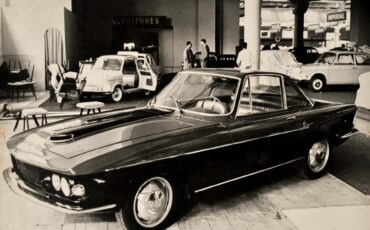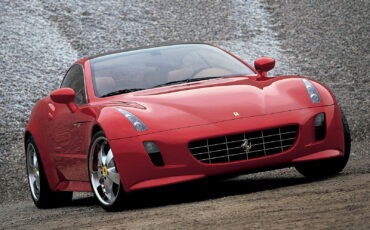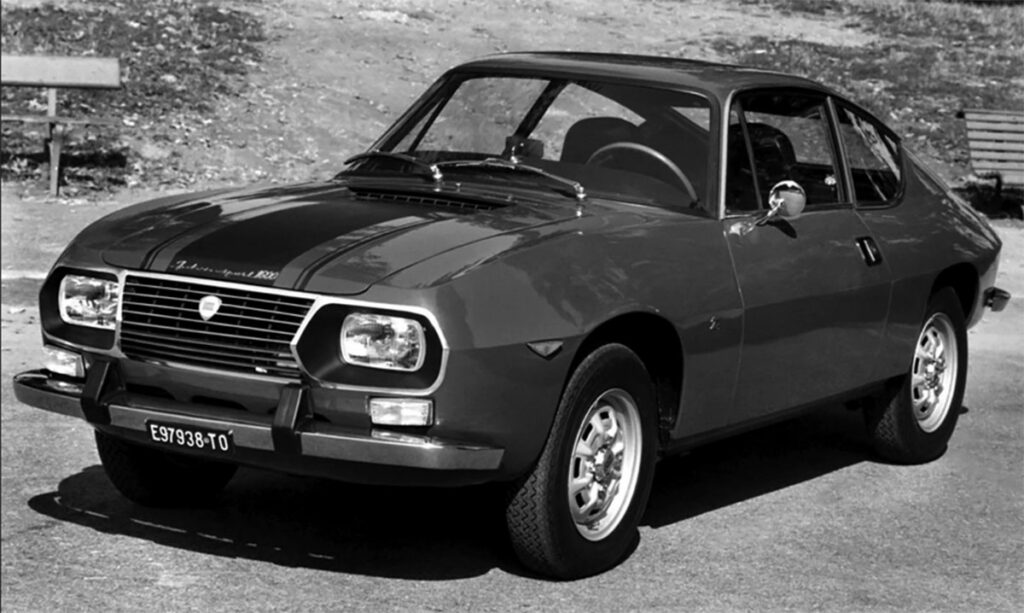
The Lancia Fulvia Sport Zagato
Designed by Ercole Spada, and built in the workshops of the Milanese coachbuilder in Terrazzano di Rho, the Lancia Fulvia Sport had an extremely modern and sleek design.
Unveiled in 1965, the Sport had the same mechanics as the stock Coupé – except for the axle ratio – but thanks to better aerodynamics it reached higher top speeds. Despite this, it was almost never used in rally competitions due to its chassis structure on which was attached its light body.
The alluminum bodywork was the main technical difference (a part of the design), which distinguished it from the original Lancia model on which is was based.
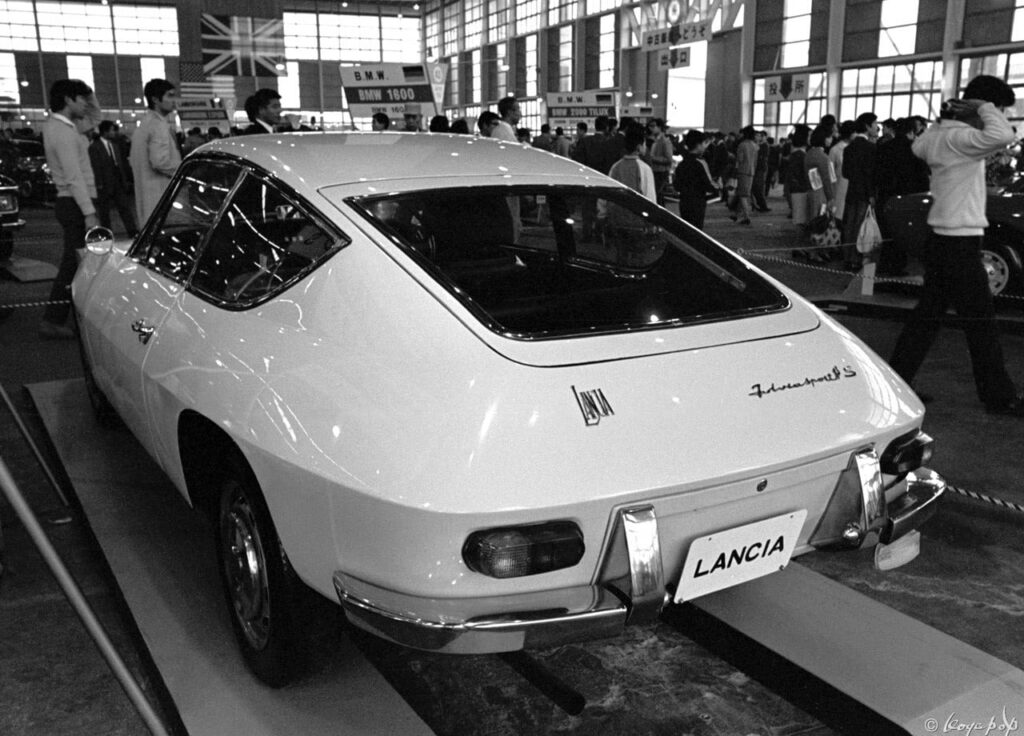
The Lancia Fulvia Sport in fact adopted (from 1965 to 1967) a bodywork entirely in Peraluman. From 1968 to 1970 a steel body was addopted, with only the bonnet, doors and spare wheel compartment made in Peraluman. The tailgate has always been in steel on all versions. The evolution of mechanics and engines follows that of the original Coupé, except for the 1231 cm³ engine.
At the 1968 Turin motor show, the Lancia Fulvia Sport was also presented in as Spider variant which, however, had no commercial follow-up remained a one-off, due to the changed industrial plans of Lancia in conjunction with the transfer of ownership of the brand to Fiat, which it certainly could not stand these expensive coachbuilt collaborations. A special feature of the Fulvia Sport Zagato was the tailgate that opened electrically with a button positioned on the dashboard. An electric motor placed under the tailgate in the center of the boot opening raised the tailgate a few centimeters enough to circulate air in the passenger compartment. A luxury for the time.
In 1970 the mechanics of the second series were adopted on the last 600 bodies of the first series.
At the end of 1970 the bodywork of the Lancia Fulvia Sport became entirely in steel, losing the moving parts in Peraluman, the body was slightly redesigned by Mittino, raising the roof for a easier access and widening the mudguards to accommodate larger tires. The bonnet was also hinged on the front, as required by the safety rules of the time.
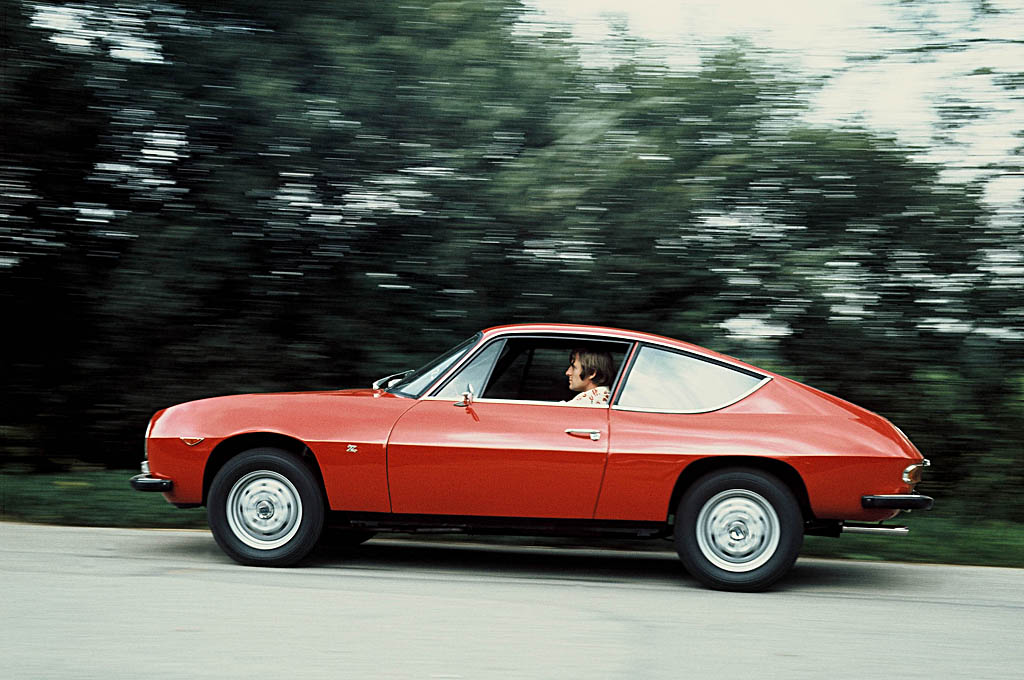
Production ceased in 1972, after Zagato had assembled approximately 6,183 units.
Due to its handcrafted assembly, the Lancia Fulvia Sport presented slightly differences in the body shapes and measures from one side to the other, the asymmetry was also present on the bodies of the second series.
Of particular historical and collector’s interest is the defined Competizione series, which at the request of sporting customers or the Lancia Squadra Corse, were fitted with lightened Peraluman bodywork, side and rear windows in Plexiglas, widened wheel arches and Campagnolo 6J13 rims.
Although the Competizione versions were intended for race, it had standard engines (818.302 and 818.303). The HF engine (second series) was used only on the Sport 1600, but the HF logo was never addopted.
In 1969 Maglioli and Pinto, on the Lancia Fulvia Sport prototype, chassis 001911, engine 818.540 and 5-speed gearbox, finished 11th overall and first in the prototype class at the 24 Hours of Daytona.
The breakdown between the various versions is as follows:
Fulvia Sport 818.132, 1216 cc (80 HP):
202 examples produced from 1965 to 1967
Fulvia Sport 1.3 818.332, 1298 cc (87 HP):
1578 units produced from 1967 to 1969 (of which about 700 with Peraluman bodywork)
Fulvia Sport 1.3 S 818.362, 1298 cc (93 HP):
1898 units produced from 1968 to 1970 (some, upon specific request, have Peraluman bodywork)
Fulvia Sport 1.3 S second series 818.650, 1298 cc (90 HP):
2600 units produced between 1970 and 1972 (of which 600 with first series bodywork called series 1 and ½)
Fulvia Sport 1600 818.750, 1584 cc (115 HP):
800 units produced between 1971 and 1972
The production numbers of the Lancia Fulvia Sport are indicative because the numbering presents discontinuities.

